By day, a lifted study-storehouse; night
Converts it to a flattened cube of light.
Whichever’s shown, the symbol is the same:
Knowledge; a University; a name.
Philip Larkin, 1983. On the Brynmor Jones Library, from Collected Poems, 1988.
Larkin at 100
Given what would have been Larkin’s 100th birthday on the 9th of August 2022, our latest blog post focuses on Larkin’s career as head librarian at the Brynmor Jones Library. This includes what Larkin contributed to the library during his employment, and how his presence can be observed within the building today.
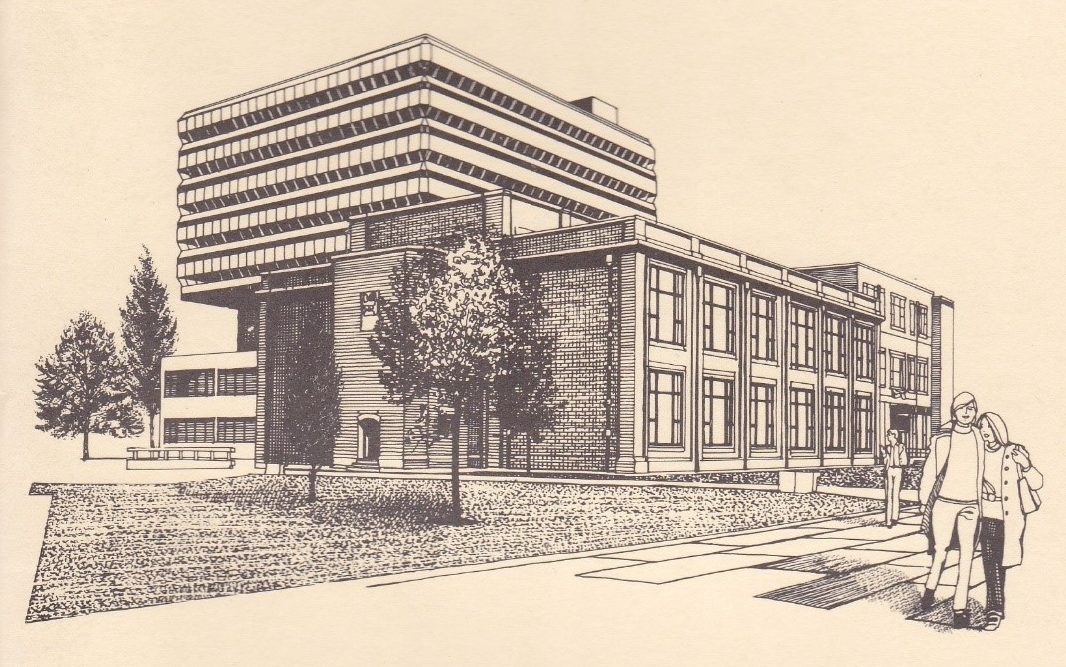
Hull University Library in the 1960s
Larkin’s biographer, and a poet in his own right, Andrew Motion wrote that ‘in all the libraries which employed him. Larkin combined the roles of scholar, technician and administrator’ (Goodman, 1999). At the time in which Larkin was employed at the University of Hull in 1955, he had held previous employment at several libraries from 1943 onwards. These being: Wellington Public Library (1943-1946), University of Leicester (1946-1950), and Queen’s University in Belfast (1950-1955). As Andrew Motion states, Larkin’s role as librarian involved multiple duties as part of the position.
This can be evidenced through Larkin’s career at the University of Hull, as he oversaw the transformation of the library alongside the university’s vice-chancellor of the time Professor Brynmor Jones, from which the library now takes its name. As of Larkin’s employment in 1955, the library contained 124,000 items and employed just 12 staff to support the 727 students of the university at this time. Larkin ‘presided over its transformation during the next two decades. A new purpose-built library was opened in two stages in 1960 and 1970, and by 1985 there were over 750,000 items in stock, a computerised catalogue and circulation system, and over 80 staff’ (Hull History Centre, 2017).

Larkin and the Library’s Transformation
At the time, the university library was one of the first to be redeveloped in post-war Britain. The task was understood to be challenging, given that Larkin had no previous experience in the architectural field. Larkin’s muse and co-worker Maeve Brennan recalled that Larkin worked on the project ‘far removed from library staff…he spread out the plans for the new building and worked on them most afternoons. We had strict instructions that his whereabouts were not to be revealed nor was he to be interrupted except on matters of urgency’ (Goodman, 1999).
During this construction, the progress was split into two stages and would involve the production of a three storey building complete with the addition of reading rooms. It was Larkin who made several suggestions to the university concerning the library’s layout during this period. This was specifically in regards to the university’s initial idea of separating the book stacks from the students within the building. The university accepted these recommendations, and certain aspects of Larkin’s attention to detail can be observed in the building’s inspired modern lighting and coloured stacks to this day. During this period, Larkin worked closely with the architect for the project and photographed the progress as the building was constructed.

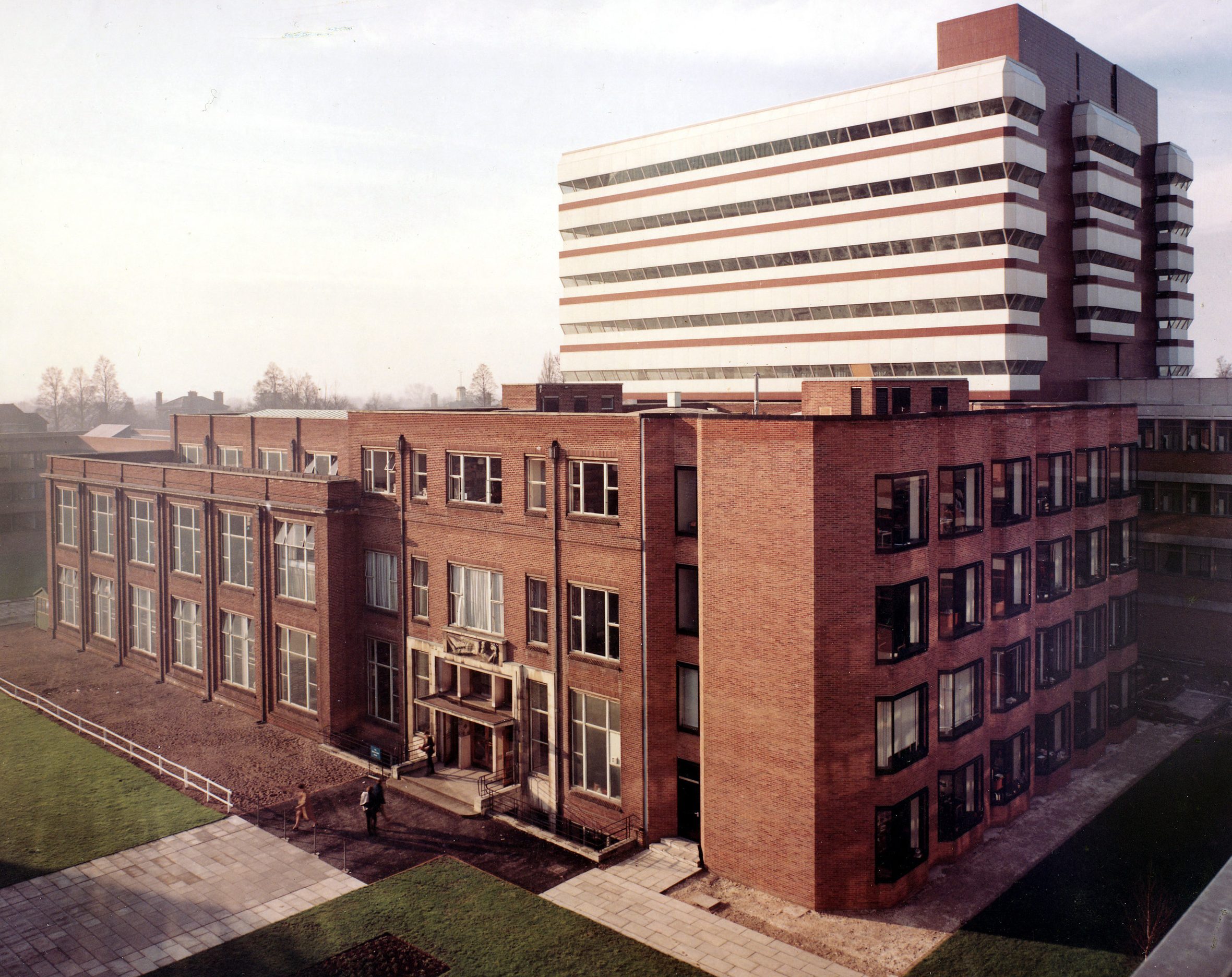
Larkin as Poet and Librarian
It is evident that during Larkin’s time at the University of Hull, his role blended between librarian and poet. It was during this period where Larkin produced his celebrated works The Whitsun Weddings (1964) and High Windows (1974). Despite the critical acclaim, Larkin chose to remain a private individual, even turning down the position of Poet Laureate in his attempts to avoid the limelight.
The poet seemed to prefer his role as librarian, once stating in an interview that ‘librarianship suits me…it has just the right blend of academic interest and administration that seems to match my particular talents’ (Goodman, 1999). The university staff and students that interacted with Larkin during this period have given a mixed retelling of their experiences, many of which can be observed in the University of Hull Alumni Association’s blog which highlights particular memories of Larkin.

Larkin’s Presence Today
Larkin’s presence in the Brynmor Jones Library remains to this day, within the preserved location of the librarian’s office. This has been the office of the University of Hull librarian since 1959, when the first phase of the library was built under Larkin’s supervision. It was used by Philip Larkin from 1959 until his death in 1985. He wrote to his mother that ‘my room is so beautiful I can hardly believe it. I’m afraid it will make everyone so green with jealousy that I shall be the most hated person in Hull’ (Pearman, 2014). After Larkin’s death, his secretary, Betty Mackereth, with whom he had a secret love affair with, shredded the thirteen volumes of his diary in this office, in accordance to his wishes.

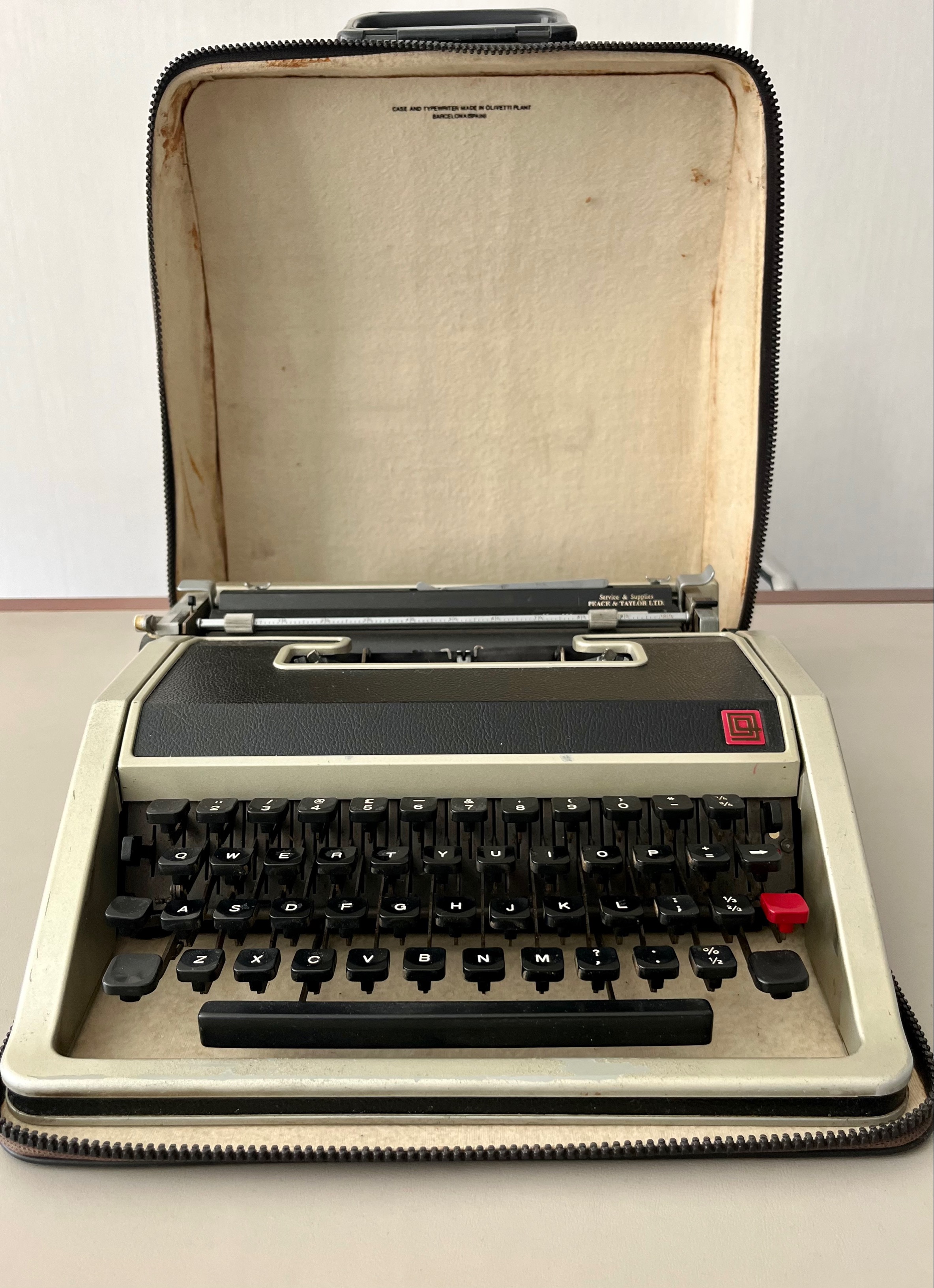
A number of things are original to the room to this day: the bookcase; the electric fire and its surround, the parquet flooring and the desk. The desk has a brass plaque commemorating its use by Larkin. He boasted that it was ‘larger than that of President Kennedy’ (Pearman, 2014). It was restored as part of the redevelopment of the library, and improved. The top of the desk is now real leather in place of the original leatherette. The typewriter is Larkin’s personal Olivetti Lettera DL.
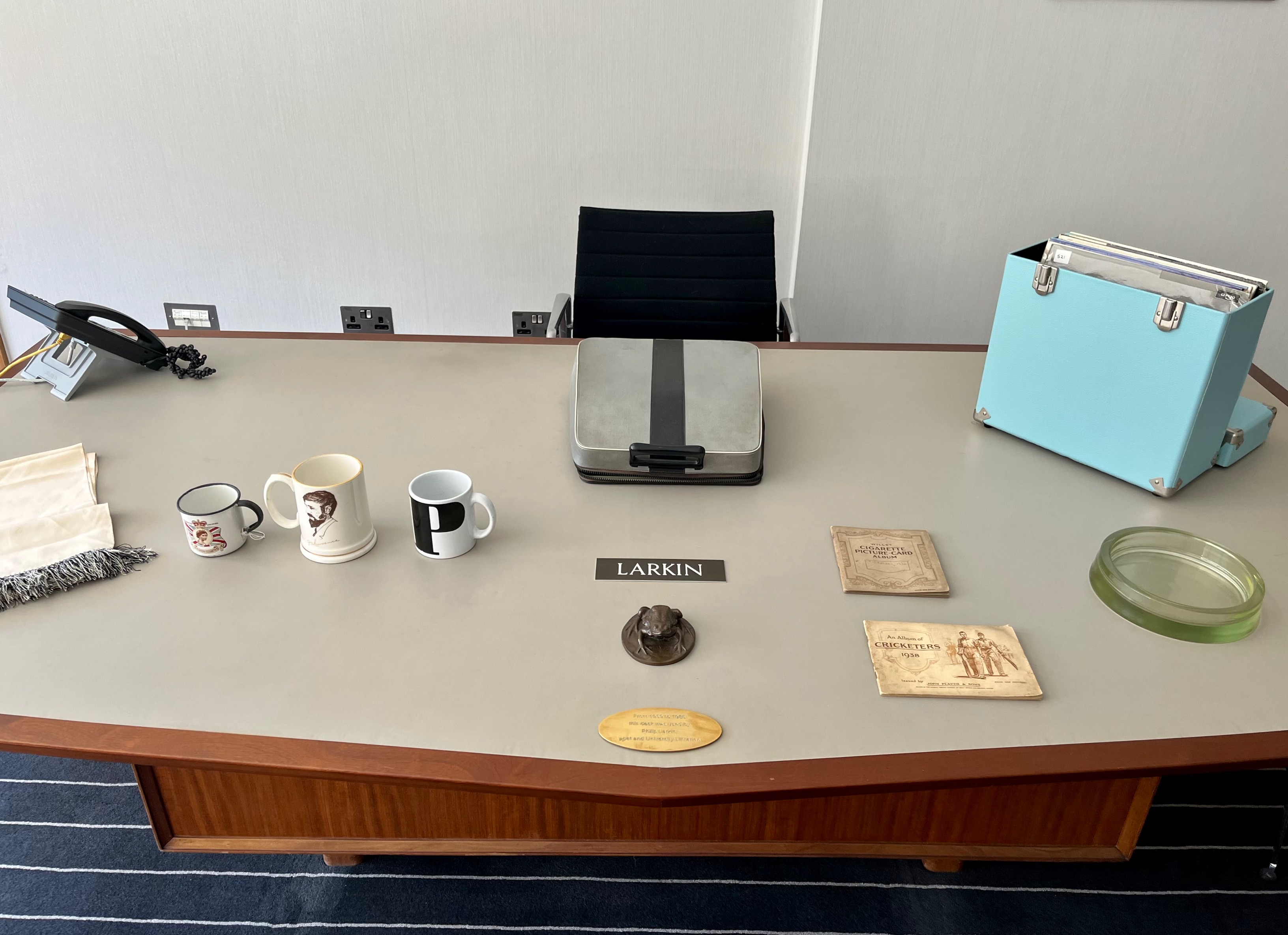

The collection of books in the bookcase is the Brynmor Jones Collection. It was assembled by the library in honour of the university’s Vice-Chancellor Sir Brynmor Jones when he retired in 1972. It consists of first editions of titles published between 1890 and 1940 that were nominated by the university’s academic departments as being of particular importance. The period of 1890 to 1940 is also the focus of the University Art Collection. The ‘Librarian’ sign on the door, pictured above, leads directly into the office from the first floor of the library and is original to the 1959 building.

There were some particular objects that Larkin kept in his office during his employment, one of these being the pottery frog money box from circa 1970. This is a reminder of Larkin’s poems Toads, written in 1954, and Toads Revisited, written in 1962, about the necessity of going to work to earn a living. When asked by an interviewer, ‘how did you arrive upon the image of a toad for work or labour?’ he replied, ‘Sheer genius’ (Phillips, 2003). There is also the Hermes 3000 office typewriter situated near the bookshelf, circa 1969.
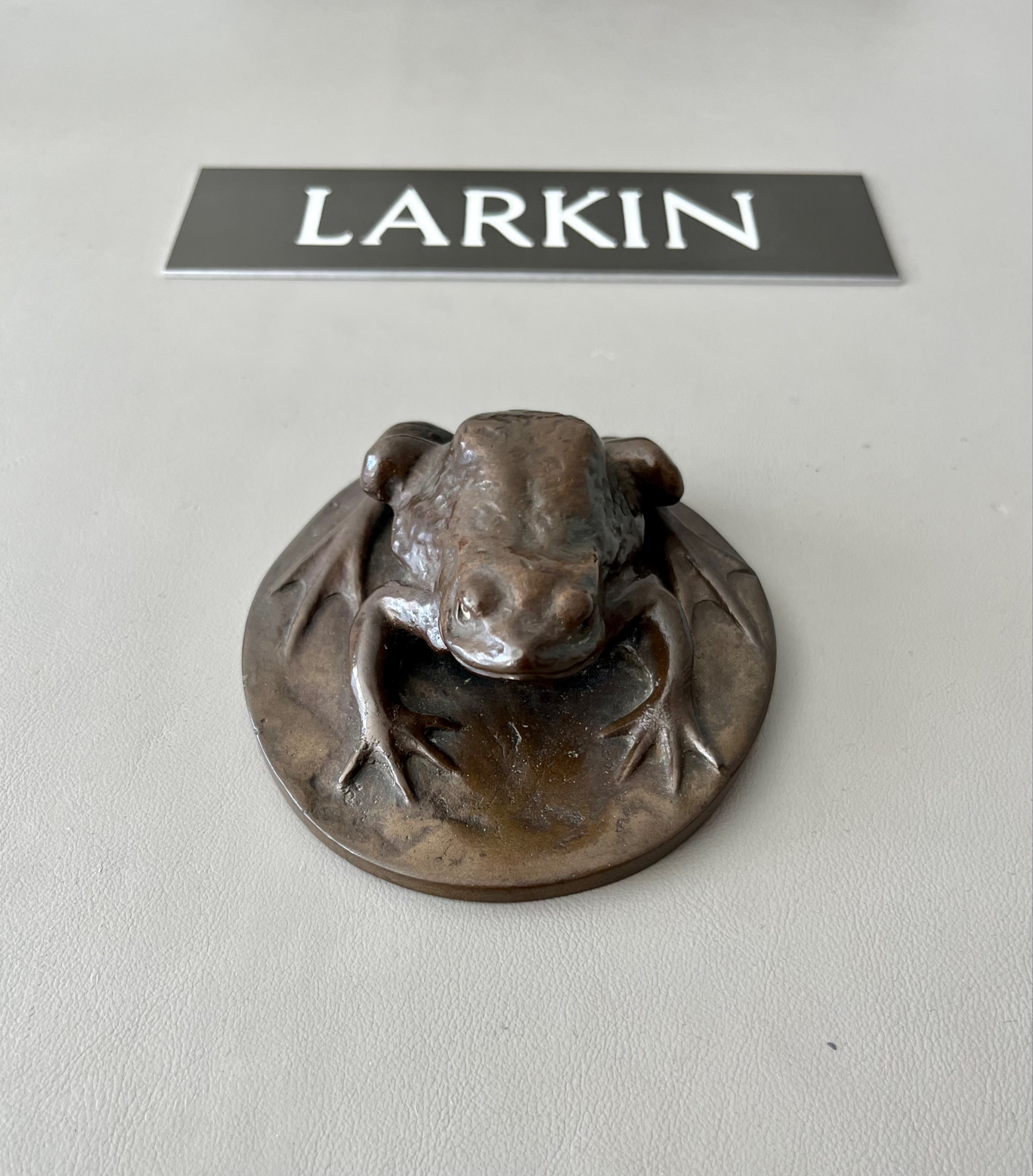
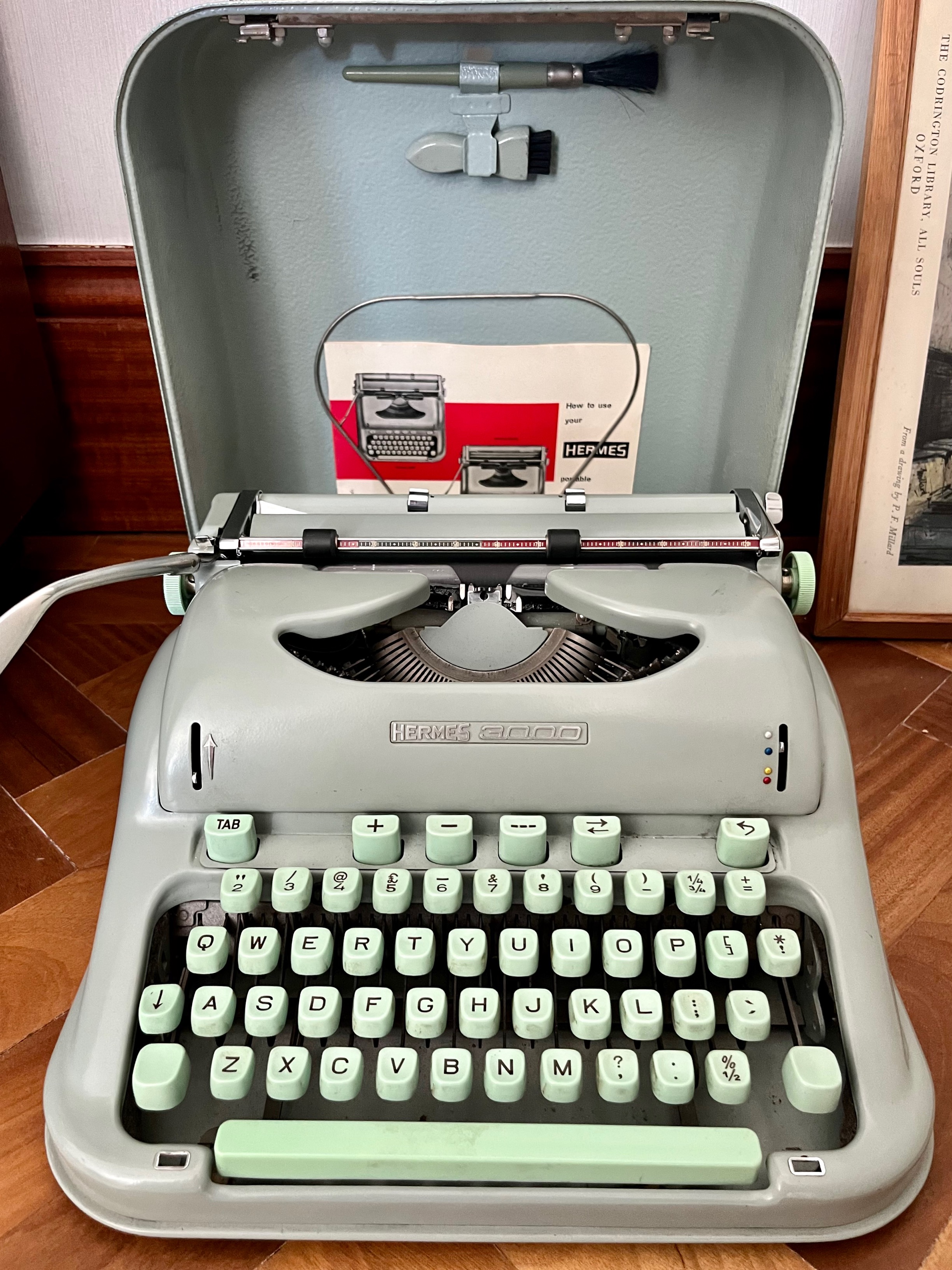
As pictured below, there are also three mugs of Larkins on display: a Queen Elizabeth II coronation mug, a D.H. Lawrence mug, and a lettered ‘P’ mug. Larkin’s nameplate can also be observed, as well as a collection of vinyls of Larkin reading his poetry.
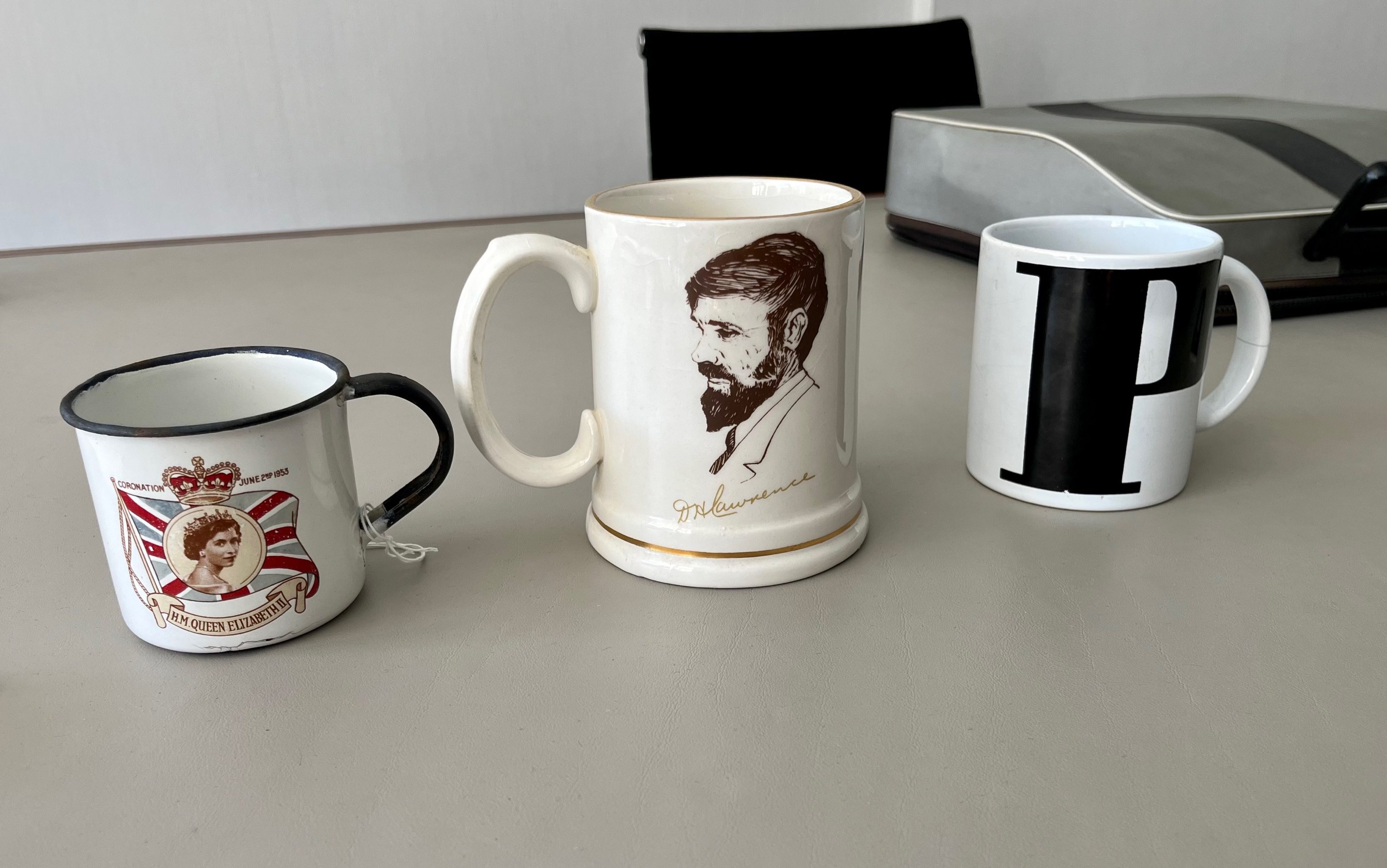

The Modern Day Brynmor Jones Library
Following Larkin’s involvement in the transformation of the library, the building has since had another upgrade. Work began in 2012 and was completed by 2015, with the Poet Laureate of the time, Professor Dame Carol Ann Duffy opening the site. The library’s collection is now slightly larger since Larkin’s time. We now house over one million books in the building, alongside other physical and digital resources. Larkin’s presence within the Brynmor Jones Library is important to discuss, as are the contentious aspects of his character.
This month, the University Library’s Twitter Conversation highlights the contentious aspects of the poet’s life and challenges us to consider how we feel about his poetry in this context. The University Archive and the Hull History Centre contain manuscripts, drafts of poems and novels, photographs and Larkin’s jazz record collection. These materials can be requested at the Hull History Centre for viewing. If you would like to follow the Conversation, you can do so below.
For Reference
Goodman, Richard. (1999). My Particular Talents. Humanities Collections. 1(2), pp.45-60. [Online]. Available at: https://philiplarkin.com/wp-content/uploads/2015/04/my_particular_talents_rgoodman.pdf.
Hull History Centre. (2017). Philip Larkin. [Online]. Hull History Centre. Available at: https://www.hullhistorycentre.org.uk/research/research-guides/philip-larkin.aspx.
Larkin, Philip. (2014). A lifted study-storehouse. In: Burnett, Archie. (Ed). The Complete Poems of Philip Larkin. London: Faber and Faber Limited.
Pearman, Hugh. (2014). After this it will be all Danish butter-factories. [Online]. RIBA. Available at: https://www.ribaj.com/culture/philip-larkin-and-the-architects.
Phillips, Robert. (2003). The Madness of Art. New York: Syracuse University Press. p.23.
